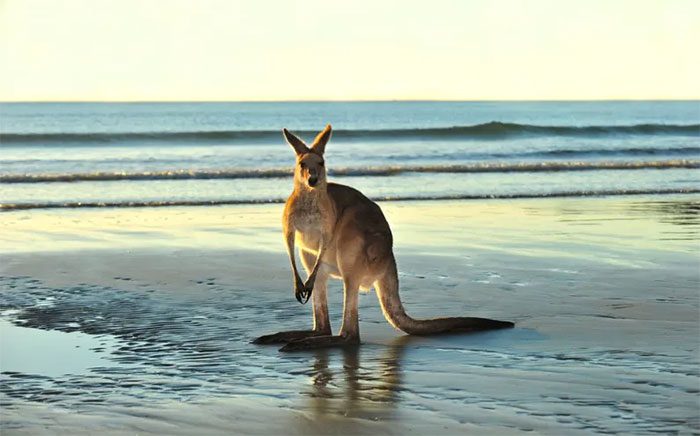Kangaroos belong to the group of animals known as marsupials. They carry their young in small pouches located on the front of their bodies. Kangaroos primarily inhabit grasslands, where they have adapted to hopping as it conserves energy more effectively than running.
As a result, they have developed strong leg and tail muscles that allow them to store energy, making their jumps less exhausting. Try running 100 meters and see how fatigued you feel; if you attempt to jump that distance instead, you’ll not only finish slower but become fatigued much more quickly. So, why do kangaroos expend so much energy by continuously hopping?
Energy storage is incredibly important for animals. Everything about survival in the wild is about energy distribution. In both plants and animals, energy is utilized in the form of chemical energy. This means that all our energy comes from breaking down organic chemicals such as carbohydrates, fats, and proteins. Any nutrients that are not broken down into energy are used for building and developing the body.
 The lower body of kangaroos is very different from that of other animals.
The lower body of kangaroos is very different from that of other animals.
Another aspect of this energy is that it must be managed well. If an animal uses less energy for its essential activities, it can allocate nutrients for physical growth. Therefore, animals have evolved to become as efficient as possible in their energy usage. So, does the continuous hopping of kangaroos really expend a lot of energy?
The lower body of kangaroos is very different from that of other animals. In fact, the ancestors of kangaroos once ran on two legs. Over time, they lost some structures (muscles and ligaments) but gained others.
Modern kangaroos do not have the developed gluteal muscles found in other running animals. However, this loss has resulted in stronger leg muscles. Additionally, these animals have developed another fascinating feature: powerful, muscular tails.
According to research, kangaroos use their muscular tails as an auxiliary limb. Their tails act like a spring, providing most of the muscular force needed for each jump. This enables these creatures to leap at speeds of up to 35 miles per hour.
 Kangaroos use their muscular tails as an auxiliary limb.
Kangaroos use their muscular tails as an auxiliary limb.
It might seem that the effort required to move up and down the terrains of Australia would consume a lot of energy, but in reality, this movement is quite energy-efficient. Since kangaroos primarily live in flat fields, they do not need to move up and down excessively. When they jump, they utilize a significant amount of stored potential energy in their joints, similar to a stretched rubber band being released. This means they are releasing energy rather than depleting it.
Along with how they use their tails like springs, this means that hopping around is more energy-efficient. Furthermore, being able to jump around makes them more agile. Due to this spring-like action, they can quickly change direction to avoid obstacles or predators.


















































